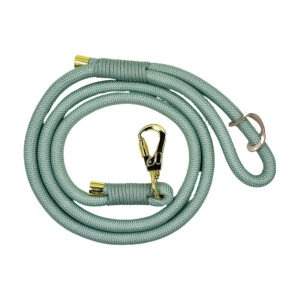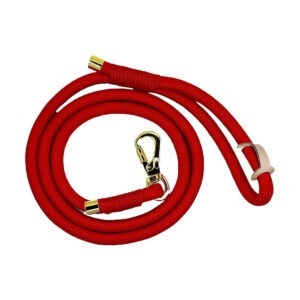The Scottish Deerhound is a breed with an aura of quiet dignity and nobility. Known for its impressive stature and remarkable speed, the Deerhound, often referred to as the ‘Royal Dog of Scotland,’ is a breed with rich historical roots. Originally bred for deer hunting, this breed now primarily serves as a faithful companion in homes worldwide.
With their unique history and large size, the dietary and exercise needs of the Deerhound escocês are distinct and crucial to ensure their overall well-being. Balancing these factors contributes significantly to their physical health, life expectancy, and emotional happiness. In this article, we will delve into understanding the Deerhound’s dietary needs, how to create an optimal exercise routine, and other essential aspects of maintaining their health. This comprehensive guide aims to help owners provide the best care for their Scottish Deerhound, ensuring they lead a healthy and fulfilling life.
Understanding the Dietary Needs of Scottish Deerhounds
Understanding the dietary needs of Scottish Deerhounds is paramount in ensuring their overall health and longevity. As large dogs, their nutritional requirements are significant, but careful attention must be paid to ensure that these needs are met without overfeeding, which can lead to obesity and associated health problems.
Some of our latest products...
A Scottish Deerhound’s diet should be rich in high-quality protein to support muscle development and maintenance. This can be derived from various sources such as chicken, beef, fish, and other meats. Additionally, healthy fats like omega-3 and omega-6 fatty acids are vital for skin and coat health, brain function, and overall well-being.
Carbohydrates provide much-needed energy, but they should be complex carbohydrates like sweet potatoes, brown rice, and vegetables, which provide sustained energy release and are rich in fiber. Fiber is crucial for a healthy digestive system and should form a part of their regular diet.
The dietary needs of a Scottish Deerhound will vary at different life stages. Puppies grow rapidly and need more protein and calories than adult dogs. An adult Deerhound’s diet should focus on maintaining a healthy weight and muscle mass, while senior Deerhounds might need diets adjusted for lower activity levels and potential health issues.
Certain health issues prevalent in Scottish Deerhounds, such as cardiomyopathy, gastric dilatation-volvulus (GDV), and osteosarcoma, have links to diet. For instance, studies suggest that taurine deficiency may contribute to cardiomyopathy. Consequently, a taurine-rich diet, often found in heart, liver, and dark meat chicken, could be beneficial.
The choice of diet—raw or commercial—should take into account the dog’s health, lifestyle, and owner’s convenience. Commercial diets are generally balanced and convenient, while raw diets, although more labor-intensive, offer control over ingredients. Any diet should ideally be balanced, complete, and vet-approved.
Remember, any significant dietary changes should be made gradually and under a vet’s supervision to avoid gastrointestinal upset. Diet is a powerful tool for promoting health and preventing disease; understanding and meeting your Scottish Deerhound’s dietary needs can significantly enhance their quality of life.
Creating a Balanced Diet for Scottish Deerhounds
Creating a balanced diet for Scottish Deerhounds requires a combination of the right nutrients in suitable proportions. As a Scottish Deerhound owner, understanding the food groups and how they contribute to your dog’s well-being is essential.
High-quality proteins are the mainstay of a Scottish Deerhound’s diet, contributing to muscle growth and repair. Sources can include lean meats like chicken, turkey, and fish. Remember, not all proteins are equal, and your dog’s food should contain identifiable animal-based protein sources.
Carbohydrates offer a crucial energy source for Scottish Deerhounds. Rather than simple carbs like sugars, opt for complex carbs like sweet potatoes, brown rice, and quinoa, which provide sustained energy and are packed with fiber for better digestion.
Healthy fats, including omega-3 and omega-6 fatty acids, support skin and coat health, aid in brain development, and provide energy. These can be found in ingredients like flaxseed, fish oil, and chicken fat.
Lastly, a balanced diet should include essential vitamins and minerals, which support various bodily functions. These can be naturally found in fruits, vegetables, and meats or added to commercial dog food.
Feeding your Scottish Deerhound shouldn’t just be about meeting basic nutritional needs. The food should be enjoyable, and the feeding experience should be positive. Here’s an example of a balanced daily diet for a healthy adult Scottish Deerhound:
- Morning: High-protein commercial dog food with a side of boiled sweet potatoes.
- Afternoon: A bowl of raw or steamed veggies as a snack.
- Evening: Cooked lean meat (such as chicken or turkey) mixed with a small portion of whole grains and a drizzle of fish oil.
It’s important to note that the above is a generalized diet plan and individual needs might vary depending on age, health status, and activity levels. Always consult with your vet or a pet nutrition expert to design a diet specific to your Scottish Deerhound’s needs. By ensuring your dog’s diet is balanced, you’ll be setting them up for a healthier and potentially longer life.
Understanding the Exercise Needs of Scottish Deerhounds
Understanding the exercise needs of Scottish Deerhounds is crucial for their health and wellbeing. As a breed, Scottish Deerhounds are relatively laid-back and calm dogs, but they still need regular exercise to maintain a healthy weight and to channel their natural instinct to chase.
Scottish Deerhounds are sprinters at heart. They don’t necessarily need hours of exercise each day, but they do need opportunities to sprint and run off-leash in a secure area. As a result, they’ll typically fare better in homes with large yards or with owners who can regularly take them to a secure, open space for free running.
A daily walk or two is also recommended. While walks aren’t the primary means of exercise for this breed, they’re still beneficial for maintaining general fitness levels and providing mental stimulation. A leisurely 30-minute stroll around the neighborhood or park can be a good way to supplement their exercise routine.
Interactive play sessions can also serve as a source of exercise. Tossing a ball or Frisbee in a secure area allows your Scottish Deerhound to engage in short sprints. Additionally, interactive play is an excellent way to bond with your Deerhound and provide mental stimulation.
As Scottish Deerhounds grow older, their exercise needs will change. It’s crucial to adjust their exercise routine as they age, decreasing the intensity as necessary but still ensuring they remain active to maintain joint health and prevent obesity.
Climate is another essential consideration. Scottish Deerhounds have a thick coat and can be prone to overheating. Therefore, during hot weather, try to schedule exercise sessions for early morning or evening when it’s cooler.
It’s essential to remember that every dog is an individual. What works for one Scottish Deerhound may not work for another. Always observe your dog’s behavior and adjust their exercise routine as necessary. If you’re unsure about the right amount or type of exercise, consult with your vet or a canine fitness expert.
Maintaining an Effective Exercise Routine for Scottish Deerhounds
Ensuring your Scottish Deerhound gets enough exercise is critical for their physical health, mental well-being, and longevity. An effective exercise routine must be consistent, adaptable, and enjoyable for your pet. Here are some tips to help you maintain an effective exercise routine for your Scottish Deerhound.
Firstly, establish a regular schedule. Deerhounds thrive on routine and knowing when they’ll get their exercise can help reduce anxiety and behavioral issues. However, this doesn’t mean the activities need to be the same every day. Variation in the types of exercises can keep your dog stimulated and interested.
Secondly, incorporate play into your dog’s exercise routine. As mentioned before, Scottish Deerhounds enjoy a good sprint. Games that allow them to run and chase, like fetch or chasing a lure, can provide excellent physical exercise while also satisfying their instinctual desires.
Thirdly, be attentive to your dog’s individual needs and limitations. Some Deerhounds may have more energy than others, while some might be less active due to age or health conditions. Adjust their exercise routine to suit their individual needs, ensuring it is neither too strenuous nor too lax.
In addition to physical exercise, remember that mental stimulation is just as important. Training sessions, puzzle toys, and interactive games can help keep your Scottish Deerhound mentally sharp.
Bear in mind that Scottish Deerhounds are prone to certain health conditions like heart disease and bone cancer. Regular exercise can play a crucial role in managing these conditions. However, it’s also important not to overdo it, as excessive or inappropriate exercise can lead to injuries.
Consult with your vet to understand the specific needs of your Scottish Deerhound better and to establish a suitable exercise routine. Also, remember that diet and exercise go hand in hand in maintaining your Scottish Deerhound’s health. So, always pair a good exercise routine with a balanced diet.
Finally, remember that your relationship with your Scottish Deerhound is a partnership. Exercise should be an enjoyable experience for both of you, a time of bonding and mutual enjoyment. By keeping this at the forefront of your routine, you’ll be able to maintain a consistent and effective exercise regimen for your Deerhound.
Conclusão
Scottish Deerhounds, known for their majestic appearance and noble temperament, are a joy to live with. Their gentle and laid-back nature often belies their need for adequate nutrition and exercise to ensure their overall health and well-being. Diet and exercise play crucial roles in not only maintaining a Deerhound’s physical health but also in ensuring their mental well-being and satisfaction of their natural instincts.
Nutritionally, Scottish Deerhounds require a balanced diet that caters to their specific needs at each stage of life. Whether you choose to feed commercial dog food, raw food, or a combination of both, the aim should always be to provide your Deerhound with a diet that is rich in high-quality protein, contains the right amount of fats and carbohydrates, and is supplemented with essential vitamins and minerals. Regularly consulting with your vet can ensure you’re on the right track with your dog’s nutritional needs.
Equally as important is the need for consistent and appropriate exercise. Not only does it help maintain a healthy weight, but it also aids in muscle development, keeps the joints healthy, manages energy levels, and provides mental stimulation. Regular exercise also ensures a happy and contented Scottish Deerhound, as it caters to their innate desire to sprint and chase.
However, every Deerhound is unique, and what works for one might not necessarily work for another. The best diet and exercise routine is one that caters to your Scottish Deerhound’s individual needs and preferences, and that can only be achieved through careful observation and a willingness to adapt and change when required.
Caring for a Scottish Deerhound can be an incredibly rewarding experience. By investing time and effort into understanding and managing their dietary and exercise needs, you ensure your gentle giant stays healthy, happy, and by your side for many years to come.
Referências
Maintaining the accuracy and reliability of information presented in this article has been of paramount importance. To ensure this, the data provided herein is based on scientific research, expert advice, and credible sources. The following references have been instrumental in providing the necessary knowledge about the best diet and exercise needs for Scottish Deerhounds:
- MacKenzie, S.A. (2010). Nutrition and Disease Management for Veterinary Technicians and Nurses. John Wiley e Filhos.
- Becker, K. (2013). Dr. Becker’s Real Food for Healthy Dogs and Cats: Simple Homemade Food. Natural Pet Productions.
- Case, L.P., Daristotle, L., Hayek, M.G., & Raasch, M.F. (2011). Canine and Feline Nutrition: A Resource for Companion Animal Professionals. Elsevier Ciências da Saúde.
- Fogle, B. (2009). The Encyclopedia of the Dog. DK Publishing.
- Coren, S. (2012). The Wisdom of Dogs: Understanding Man’s Best Friend. Imprensa livre.
- Morris, P.J., Salt, C., Raila, J., Brenten, T., Kohn, B., Schweigert, F.J., & Zentek, J. (2012). Safety Evaluation of Vitamin A in Growing Dogs. British Journal of Nutrition, 108(10), 1800-1809.
- Piercy, R.J., Hinchcliff, K.W., DiSilvestro, R.A., Reinhart, G.A., Roberts, G.C., & Swenson, R.A. (2000). Effect of Dietary Supplements Containing Antioxidants on Attenuation of Muscle Damage in Exercising Sled Dogs. American Journal of Veterinary Research, 61(11), 1438-1445.
Please note that while these sources provide valuable information, it is always recommended to consult with a trusted veterinarian or a pet nutrition expert when deciding on changes to your Scottish Deerhound’s diet or exercise regime. The information presented in this article should serve as a guide and not replace professional veterinary advice.
perguntas frequentes
What kind of diet is best for my Scottish Deerhound?
A balanced diet that includes proteins, fats, carbohydrates, vitamins, and minerals is essential for Scottish Deerhounds. High-quality commercial dog food, specifically formulated for large breeds, is often a good choice. However, every dog has its own unique needs, so it’s best to consult with a vet to develop a specific diet plan for your dog.
How much exercise does a Scottish Deerhound need?
Scottish Deerhounds are an active breed that requires regular exercise to maintain their health and happiness. A daily routine should include walks, playtime, and mental stimulation activities. However, the intensity and duration of these activities can vary based on the dog’s age, health, and energy levels.
Can a Scottish Deerhound live in an apartment?
While Scottish Deerhounds are adaptable and can live in apartments, they do require ample space due to their large size and exercise needs. Also, they should be provided with several opportunities for outdoor activities.
Are Scottish Deerhounds prone to any specific health issues?
Yes, like many large breeds, Scottish Deerhounds can be prone to certain health issues such as hip dysplasia, heart conditions, and bloating. A proper diet and regular exercise can help manage these conditions.
What can I do if my Scottish Deerhound is gaining too much weight?
If your Scottish Deerhound is gaining too much weight, it could be due to overfeeding, lack of exercise, or an underlying health condition. It’s best to consult with a vet to determine the cause and develop a plan. This might include a change in diet, increased exercise, or medical treatment.





